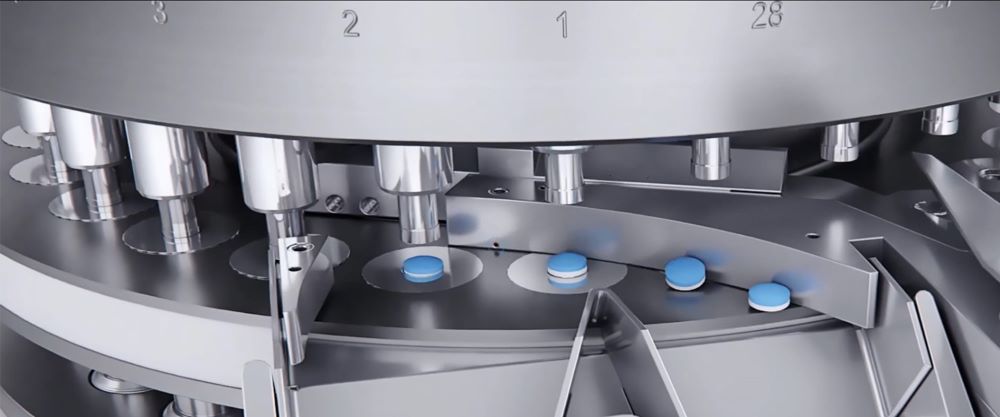Types of Tablet Presses in the Pharmaceutical Industry
There are several types of tablet presses used in the pharmaceutical industry, each with its own characteristics and capabilities. The main types of tablet presses include:

-
Single-Station Tablet Press:
Also known as single-punch tablet press, it is the simplest and oldest type of tablet press. It produces one tablet at a time and is commonly used for small-scale production, research and development, and compounding pharmacies.
-
Rotary Tablet Press:
Rotary tablet presses are widely used in the pharmaceutical industry for large-scale production. They have multiple stations arranged in a rotary turret that compresses multiple tablets simultaneously. Rotary tablet presses offer higher production speeds and efficiency compared to single-station presses.
-
High-Speed Tablet Press:
High-speed tablet presses are designed for extremely efficient and high-volume tablet production. They have advanced features such as faster turret rotation speed, enhanced compression force, and improved automation capabilities. These presses can produce a large number of tablets per minute.
-
Multi-Layer Tablet Press:
Multi-layer tablet presses are specialized presses used for producing layered tablets. These tablets have different layers or zones containing different active ingredients or formulations. Multi-layer presses have separate feeders and compression systems to handle the different layers and ensure accurate layering during compression.
-
Bilayer and Trilayer Tablet Press:
These presses are specifically designed for manufacturing tablets with two or three layers. They have multiple feeding systems and compression zones to create tablets with distinct layers. Bilayer and trilayer tablets are often used for controlled-release or combination drug formulations.
-
Specialty Tablet Presses:
In addition to the above types, there are specialty tablet presses designed for specific applications. This includes presses for producing chewable tablets, effervescent tablets, sublingual tablets, and other specialized dosage forms. These presses may have unique features or modifications to accommodate the specific requirements of the tablet formulation.
The selection of the appropriate tablet press type depends on factors such as production volume, tablet design, formulation characteristics, and process requirements. Manufacturers consider these factors to choose the most suitable tablet press for their specific needs.